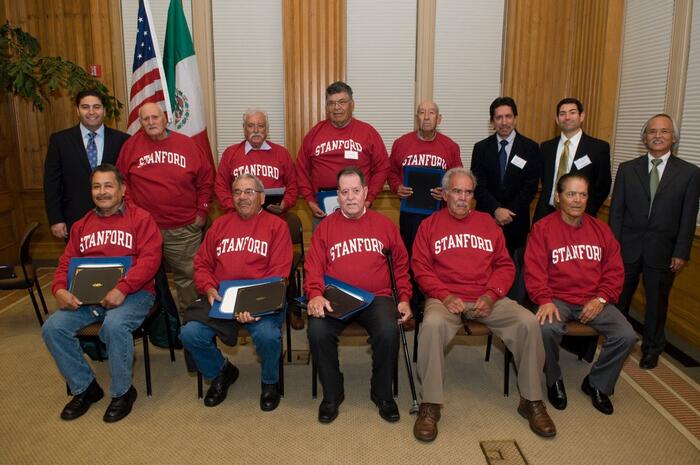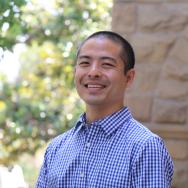The following is Part 2 of a multiple-part series. For Part 1, please visit here.
Since the unprecedented events on January 6, 2021, I have had the chance to communicate with many young students. Like many Americans, they too are concerned about the divisions in U.S. society and what has been projected abroad about what it means to be an American. On December 8, 2020, 91łÔąĎ posted an article that highlights eight reflections from students. This article features eight more students from diverse backgrounds.
As I mentioned last month, my hope is that the free educational website—“”—will help students reflect upon their civil liberties during this challenging time. The lessons were authored by 91łÔąĎ’s Rylan Sekiguchi for use at the high school and college levels, and the website was developed by the Mineta Legacy Project in partnership with 91łÔąĎ.
One of the students, Junow Iwasaki, is an American who is enrolled in 91łÔąĎ’s Stanford e-Japan course, which introduces U.S. society and culture and U.S.–Japan relations to high school students in Japan. The other seven students are living in the United States. The reflections below do not necessarily reflect those of the 91łÔąĎ staff.
Ana Maria Griffin Morimoto, New York:
Being an American means eating turkey and sushi for Thanksgiving dinner.
It means decorating the Christmas tree, and finding presents.
It means wearing a kimono on New Year’s Day, and eating osechi-ryori [traditional Japanese New Year’s foods].
Being an American means I get the chance to fight and reach my dream of becoming a performer.
It means choice—free and independent to be exactly who I want to be.
It means beauty on many levels.
The beauty of loving whoever I want to love.
The beauty of knowing I can make it.
Being an American means being an immigrant.
I can choose to speak Spanish or English with my classmates or co-workers.
Being an American is being a former orphan from Colombia who gets to share what it is to be an American.
Mana Iketani, Hawaii:
December 7, 2020 marked the 75th anniversary of the Imperial Japanese Navy attack on Pearl Harbor in 1941, killing 2,403 people, and led to the United States’ formal entry into World War II. It is a terrifying topic to learn in school in Hawaii as a Japanese immigrant, causing me to inevitably think, “Would my classmates start discriminating against me or disdain me?” Against my prediction, I never faced any discrimination since I moved here at age nine, even after my classmates learned the history. People in my state are respectful to each individual, tolerant of the diversity of backgrounds, cultures, and ideas. Respecting others and yourself is what it means to be an American in one of the most diverse countries of the world.
Junow Iwasaki, Tokyo, Japan:
I was born in New York as a dual citizen but have lived in Japan ever since I was a baby. Though I am an American, I have hesitated to talk openly about my nationality because I want to “fit in” with others. However, having experienced funny looks from kids and adults who ignore me, I have come to realize that I cannot simply be perceived as Japanese either. I am still figuring out my identity, but I think being American is not just speaking English or acting outspoken and bold. Americans living abroad like me contribute to the fabric of what it means to be an American. Despite how I have been perceived, I wish that I could simply be who I am, an American who embraces two cultures.
Sienna Mack, Washington:
Being an American should have nothing to do with your race, your citizenship, or your religion. The only thing that defines an American should be the will to stand up for what is right no matter what. It should mean striving for the American dream of “life, liberty, and the pursuit of happiness” regardless of how big or small your efforts are. True patriotism means understanding that this country was founded on ideals yet to be achieved, and as Americans, humans, and citizens of the world, it is our right and duty to realize that dream. Throughout the history of our country, built on revolution, people have rebelled against injustice. And time and time again, as we do so, we reach a little bit closer to the American Dream.
Carrie Masters, Ohio:
Being an American means that I live in a land of freedom, opportunity, and diversity. I have the ability to shape my future. I determine where I live, my career, my religion, my political views, etc. A core Midwestern value is to work hard so that I am prepared to take advantage of opportunities that arise. These chances create responsibility, and it is imperative that we reciprocate by helping others. That help can be in the pursuit of big goals or something simple. Being an American means living with, learning from, and respecting different cultures. America benefits from our different cultural backgrounds and ideas, which become part of who we are. I am fortunate to live where I can make my own decisions and achieve my goals through hard work.
Erykah Lalah Secody, Arizona:
As Native Americans, Navajo, we are citizens of two sovereign nations, the U.S. and the Navajo Nation. We are the only language-minority group in the U.S. with this unique dual citizenship status. But being an American to me means being a citizen in two of the greatest nations in the world, a nation built on meritocracy, as we are taught in our Native homeland, “...if it’s to be, it’s up to me.” Being an American means we are a nation of diversity, a nation of, for, and by the people, a nation of immigrants in their journey to America in pursuit of life, liberty, and happiness.
Eli Stein, Hawaii:
I live in a country rich with opportunities, guided by the ideology that Americans, like the bald eagle, are born with wings granting flight in return for hard work. I have learned this is not the case. While the United States offers opportunity, it is plagued by inherent inequality. Some are born with clipped wings, while others fly with little effort: an inequality driven by systemic racial injustice. The United States is rooted in a repetitious cycle; the rich become richer while the poor suffer hardship. Growing up in Hawaii, a racially and economically diverse state, I witness the unequal opportunities minorities face, a problem often ignored. Homeless children live on Waikiki’s streets, a block from lavish penthouses. Despite the inequality, I still believe that with unity, we can create change.
Michelle Thurber, California:
My favorite part about being American is that when I think of the word “American,” no particular race or religion comes to mind. I feel connected to my ethnic background (half-Chinese), while still considering myself entirely American. However, I realize that my perspective may come partly from the fact that I live in the San Francisco Bay Area, where there is always someone around who looks like me. Hateful rhetoric in American politics frustrates me because I experience firsthand the richness that comes from diversity and open-mindedness. What brings me hope is being part of a generation of young people willing to take a stand in favor of diversity—on social media now, and on the political stage in the future.
























